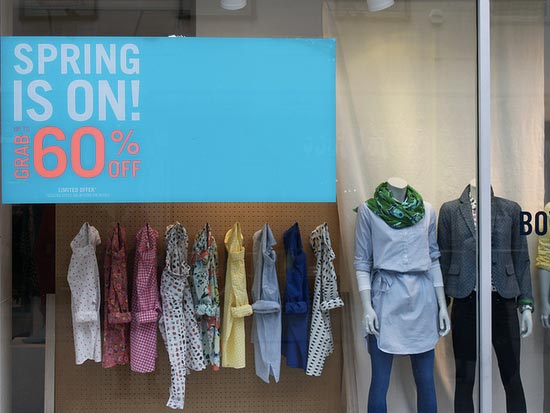Reference pricing refers to how much consumers expect to pay for a good in relation to other competitors and the previously advertised price.
- Reference pricing could refer to a situation when a firm sells price just below the main price of its competitor. (BD)
- Reference pricing also refers to a situation where a firm sales a good at a large discount to a previously advertised ‘reference price’ (OFT)
When buying goods consumers give importance to comparing the price of the good with a ‘reference price’ The price that they would usually expect to pay or the price they think the good is worth using all previous data.
Setting an Artificially High Reference Price
Companies may seek to establish an artificially high reference price for its product so that it can later offer discounts. For example, it is common for clothes shops to introduce clothes at a high price, e.g. £70. But, then after a few weeks, they offer 50-60% discount. Consumers think they are getting a good deal because they have a 50% discount on the reference price.
Reference Pricing can be considered unfair competition. There are certain laws about offering discounts on advertised prices. For example, shops have to sell goods at a set price in all its stores for a minimum time period before cutting price.
The OFT found that this kind of reference pricing can significantly increase consumers’ valuation of what they were buying.
An OFT report found that Groupon were guilty of many unfair business practices, including reference pricing. (Guardian link)
What Determines the Reference Price for a Product?
- Memories of past prices. What consumers have paid in the past for similar products
- Prices set by the market leader with most brand loyalty. For example, in the cola market, people would instinctively think of what coca-cola would cost. If Tesco sells 20% cheaper, then they are paying a lower price.
- Price of related products and services. For example, if coach travel to London is £15, that will play some role in creating a reference price for train tickets.
- Nature of the industry. For example, people have come to expect large discounts in clothes shops. When they see clothes on sale at full price, they may remember that these prices are likely to be cut at a later stage.
- Other products in the line. For example, if you introduce a more expensive, high-end product, it may look lower end sales lines look more attractive. For example, premium organic bread at £3.00 a loaf, makes an ordinary loaf at £1.25 look relatively more attractive.
Related


1 thought on “Reference Pricing”
Comments are closed.